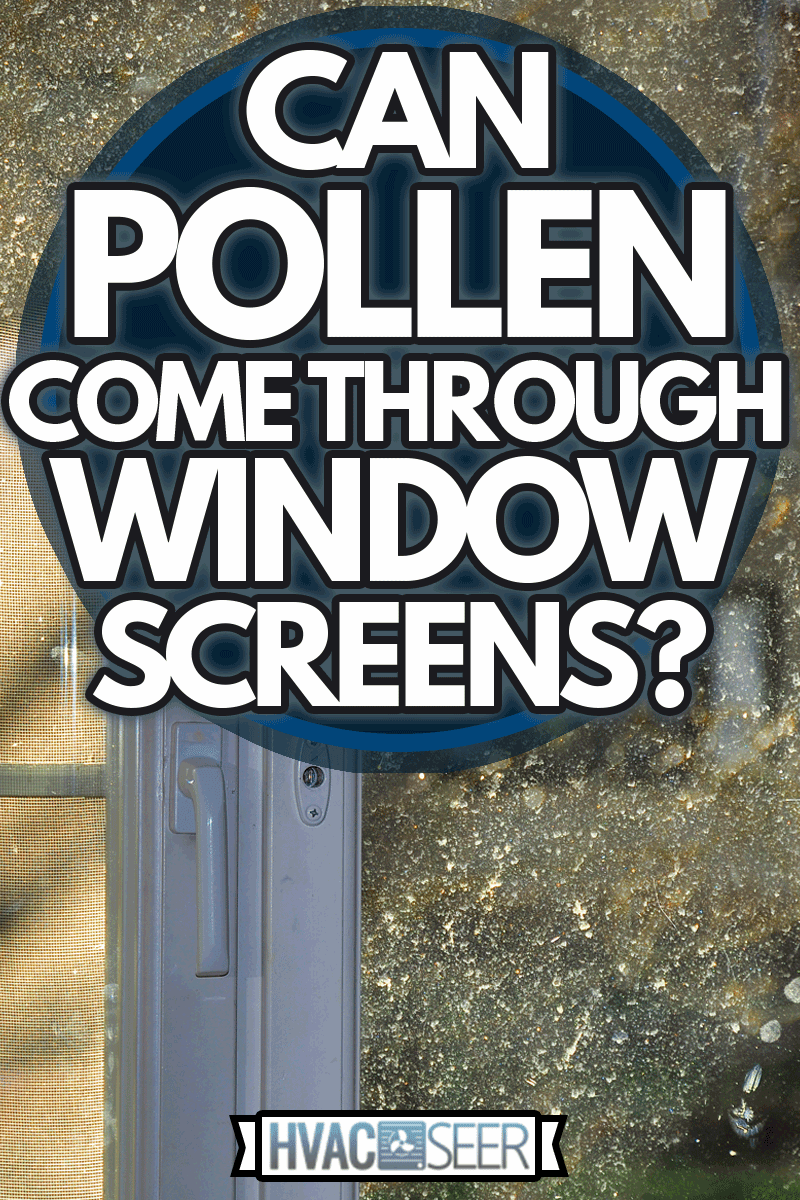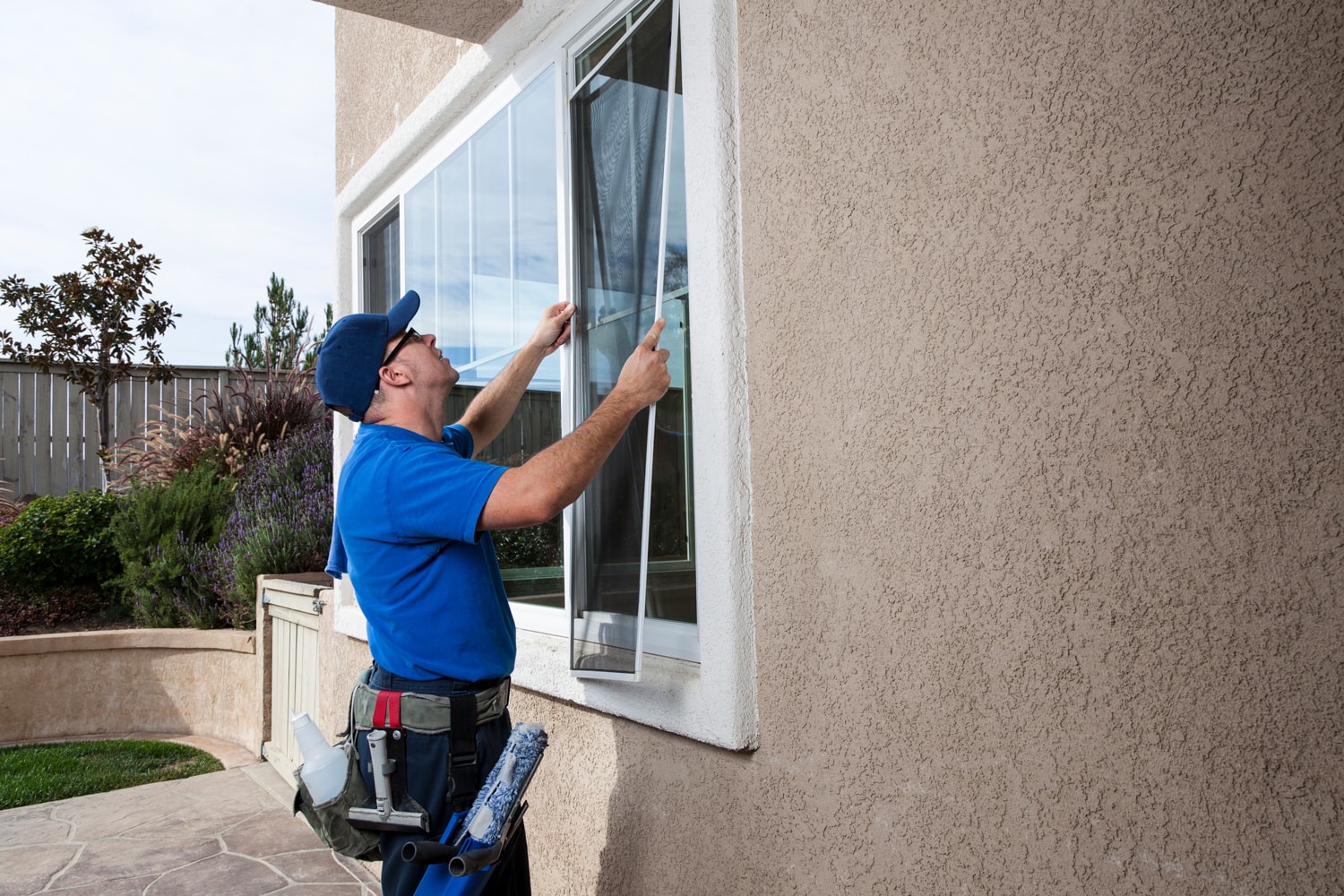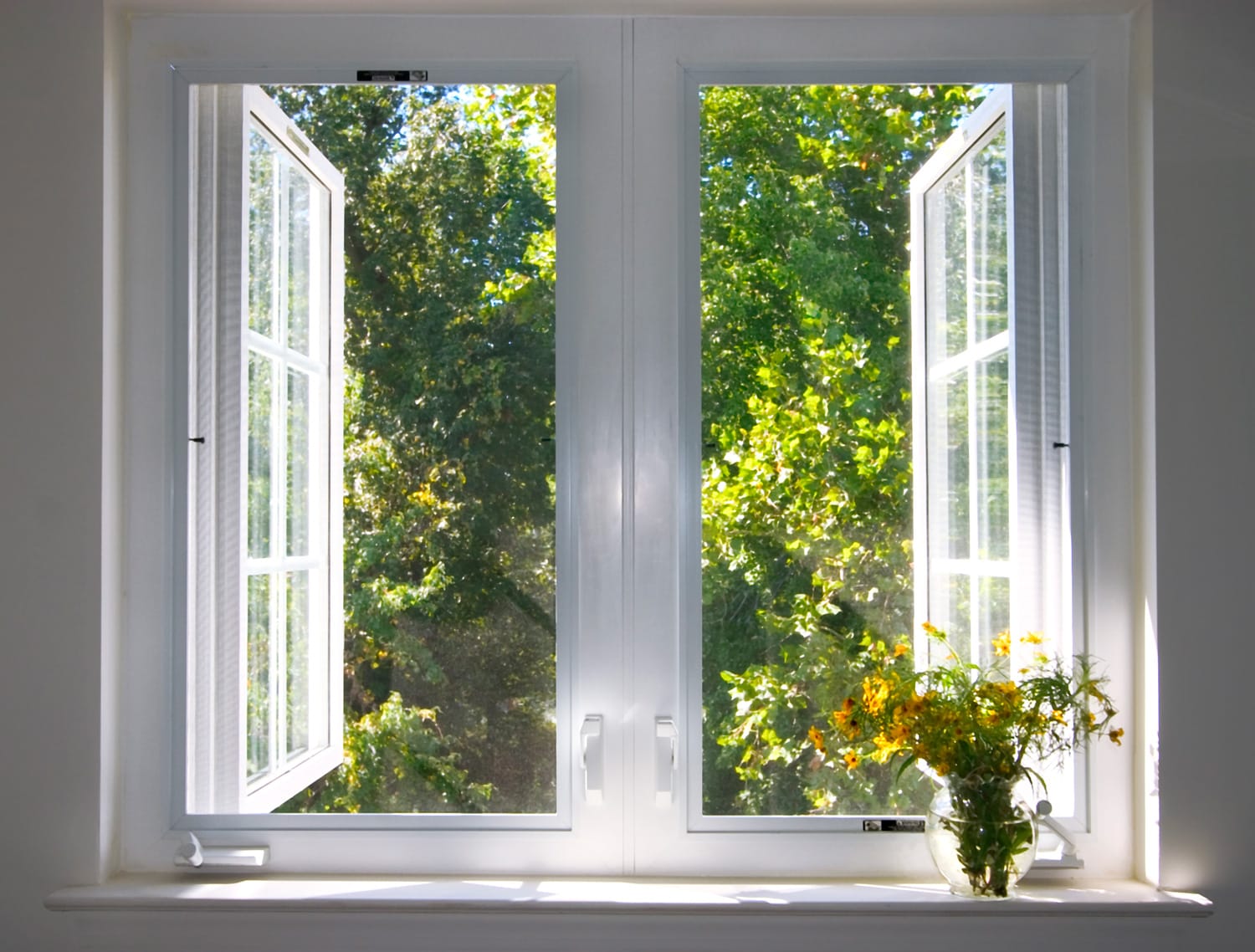Pollen is a major cause of allergies in almost all seasons except during the cold winter months. If you suffer from allergies, the convenient solution is to stay indoors. But you may still be worrying that pollen might penetrate your window screens and get inside your home. Well, worry no more! We did thorough research for your peace of mind.
Yes, pollen can come through traditional window screens. With an average grain size of 25 microns (.000975 inches) and some even as small as 2.5 microns, pollen particles are too tiny for the window screens to filter. Besides, the purpose of a normal window screen is to keep out insects and other elements but not pollen, dust, and other allergens.
Don't decide to permanently close all your windows just yet. While pollen can come through standard window screens, the good news is you can use a pollen repellent window screen to protect your home against the allergen. Keep reading to learn about its efficiency and further understand its working principle. We will also discuss how you can reduce pollen in your home and when to keep your windows open.

Why Do Pollen Particles Get Through Traditional Window Screens?

As mentioned earlier, pollen grains are too tiny for traditional window screens to deter. Their average size per grain is .000975 inches while some can be as small as .0000975 inches (2.5 microns).
With traditional window screens, you can't expect enough indoor air quality since their only purpose is to keep out insects and not other allergens like pollen and dust. Also, the standard size of the holes in window screens is a little over one millimeter.
How To Reduce Pollen In Your Home
Though it's impossible completely get rid of pollen, you can reduce your exposure to it to avoid pollen allergy symptoms, which may include a runny nose, sneezing, cough, nasal congestion, watery eyes, and increased asthmatic reactions.
Many people even realize that they need to switch their allergy medications to these practical measures for improving indoor air quality:
Install Pollen Repellent Window Screens
Pollen repellent window screens can efficiently block both dust and pollen. The typical screens mesh is small enough to block flying insects but airborne pollen is even smaller than the tiniest bugs.
Though these allergy screens are more costly than the standard ones, they ensure better air quality, keeping pollen and dust at bay. They at the same time allow you to have your windows open and breathe in spring's fresh air.
Invest In An Air Purifier With HEPA Filter
HEPA (High-Efficiency Particulate Air) filter is the most effective when it comes to capturing airborne pollen in indoor environments. This device can remove up to 99.97 percent of allergens in the air (including pollen, dust, etc.).
Upgrade To Effective Central Air Filters
Central air systems feature filters that are disposable, but there are filters that are more effective at capturing pollen and other allergens. Switch your basic disposable filters with models that are better at capturing indoor pollutants, especially pollen.
Trace Where Pollen Particles Can Accumulate
- Pollen can cling to your skin, hair, and clothes when you're outside. Change your clothes once you get home and before you go to bed make sure you take a bath to remove the pollen from your hair and skin. Not doing so may trigger allergic reactions as you may bring the pollen to your bed.
- Pollen can also settle into your bedsheets, pillowcases, and the like. Wash your bedding once to twice a week or have spare sets of bedding so you can swap it often without the burden of doing laundry every three days.
- Your shoes could also be the culprit for bringing pollen. Have everyone take off their shoes and place them at the front door, garage, or at a shoe shelf. Place doormats outside and inside your home to trap pollen particles that were wiped off from their shoes.
- Your pet's fur is an accessible place for pollen particles to hide, especially if they usually play outdoors like in your backyard. Groom your pets regularly and brush them daily to remove possible allergens from their fur.
Take note that pollen can also settle on other surfaces like carpets, curtains, etc. It's important to trace wherever pollen can accumulate, and do your best to mitigate this allergen.
Vacuum Every Week
Getting rid of pollen is a never ending process; all you can do is reduce the presence of this allergen in your home. Aside from the measures we have discussed above, you need to have a regular cleaning schedule. Vacuum at least once a week to clean the residual pollen brought inside by people and pets.
A vacuum cleaner with a small particle HEPA filter would be reliable. A robot vacuum could also be helpful especially if you don't want to vacuum several times a week.
Prevention is also a good step to avoid and reduce pollen. As the majority of pollen allergies are triggered by grass pollens, it will be ideal to keep your lawn short so that it will discourage the growth of weeds, flowers, and the release of pollen.
Lastly, if you have severe allergies, you can undergo testing to know which specific pollen particles you should avoid.
The Working Principle Of A Pollen Repellent Screen

Pollen screens are made of polyester, and their screen's hole equates to a diameter of 0.0115 and 0.0130 inches. This is small enough to stop pollen from penetrating. Given that the holes are smaller than typical screens, there would always be dust and pollen build-up trapped in its mesh, so you will need to clean it once to twice a week.
In terms of pollen blocking capacity, for a better understanding, let's look into two brands of pollen screens. The AllergyGuard can block over 90 percent of pollen particles while PollenTec can block 99 percent of airborne pollen.
Though these types of screens are effective, some consumers say that PollenTec is darker and makes the outside view a little blurry. On the other hand, other brands claim to have a high visibility screen.
Click here to see this PollenTec Clean Air Window Screen on Amazon.
When To Keep My Windows Open?

There is no definite or specific rule on when you should keep your windows shut or open. If you have pollen allergies, having pollen repellent window screens would enable you to enjoy opened windows no matter the allergy seasons. But temperature and ventilation should also be deciding factors.
Keeping your windows open has a number of advantages like saving electricity costs when you turn off your air conditioner while having the inflow of fresh air, making your home smell better, and having the enjoyment of viewing your green and beautiful surroundings. Open your windows at least once a day for at least 5 minutes and ideally 15 to 20 minutes to improve indoor air quality.
Summer can possibly make your house hotter. Thus, you should also know when to keep your windows shut. It is advisable that you close your windows when the temperature outside is hotter than the air inside your house. Doing so will help maintain your indoor temperature at a comfortable level.
You should also keep your windows closed when there is poor air quality outdoors. You should always be sensitive to your needs and surroundings to make sure you have a healthy indoor air quality.
For more information about when you should keep your windows open, check our other posts:
Air Conditioning Vs Open Windows At Night: Which Is Best?
Should You Open Windows In The Summer?
In Closing

Pollen can get through normal window screens. But if you want to enjoy open windows, the best solution is to use pollen-repellent window screens. They are effective in mitigating pollen, dust, and other particles. You can also apply the techniques we have outlined to reduce pollen in your home. Be wise as to when to keep your windows open for your convenience inasmuch as maintaining proper air ventilation and taking care of your health can help relieve your allergies.

